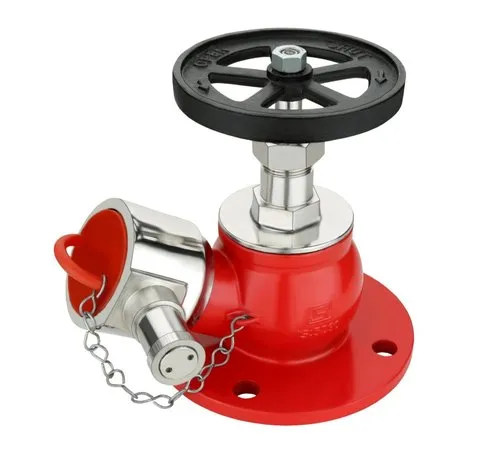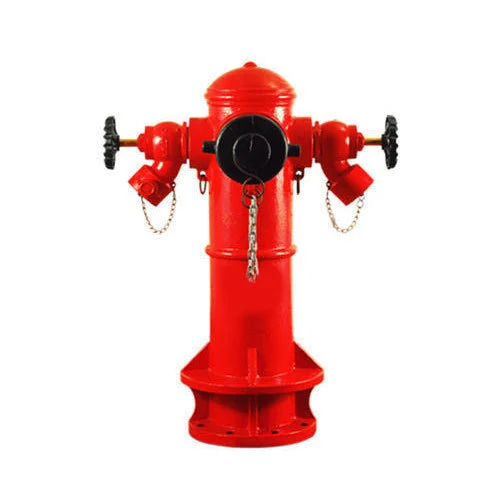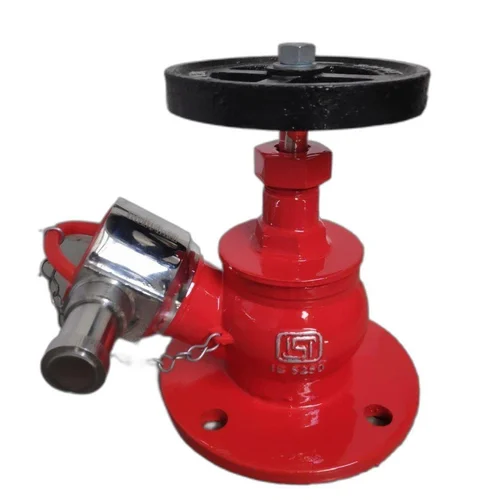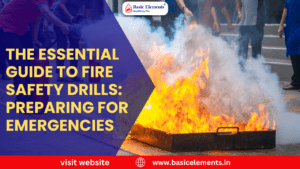Understanding the Basics of Fire Hydrant Valves
At Basic Elements., we’re committed to educating our community about critical fire safety infrastructure. Today, we’re diving deep into an often overlooked but vital component of urban fire protection: fire hydrant valves.
The Unsung Heroes of Our Streets
Fire hydrants are a common sight in our neighbourhoods, but few people understand the complex engineering behind these life-saving devices. As leaders in fire safety technology, we at FireSafe Solutions Inc. believe that knowledge is power. Understanding how fire hydrants work can help communities appreciate and better maintain these crucial safety features.
Anatomy of a Fire Hydrant
Let’s break down the main components of a typical fire hydrant:
1. Fire Hydrant Valve
At the heart of every hydrant is the fire hydrant valve. This crucial component is typically located underground, at the base of the hydrant. Its primary function is to control the flow of water from the main water supply to the hydrant barrel.
The valve is designed to withstand high water pressures and to open and close quickly and efficiently. When a firefighter turns the operating nut at the top of the hydrant, it activates this main valve, allowing water to flow into the hydrant barrel and out through the nozzles.

2. Fire Hydrant Pipe
The fire hydrant pipe, also known as the barrel or standpipe, is the main body of the hydrant that you see above ground. This sturdy pipe connects the underground water main to the above-ground nozzles. It’s built to withstand extreme pressures and harsh weather conditions.
3. Nozzles
Most fire hydrants feature multiple nozzles:
- Two smaller side nozzles (typically 2.5 inches in diameter)
- One larger front nozzle (typically 4.5 inches in diameter)
These nozzles are where firefighters attach their hoses. The different sizes allow for versatility in firefighting operations, accommodating various hose sizes and water flow requirements.
4. Operating Nut
The operating nut is located at the very top of the hydrant. This is what firefighters turn to open or close the main valve. It’s designed for quick operation, allowing rapid access to water in emergencies.
Fire Hydrant Types
Wet Barrel Hydrants
In these hydrants, water fills the entire barrel and is always under pressure. When you open a nozzle cap, water immediately flows out. These are commonly used in warmer climates where freezing is not a concern.

Dry Barrel Hydrants
In colder regions, dry barrel hydrants are more common. These keep the water below the frost line to prevent freezing. When the main valve is opened, water rises into the barrel and out through the nozzles.
Also Read: The Importance of Carbon Monoxide Detectors 101: Protecting Your Home and Family
Common Types of Fire Hydrant Valves
We believe that understanding the different types of fire hydrant valves is crucial for effective fire safety management. Each type has its own advantages and is suited to different environments and needs. Let’s explore the most common types of fire hydrant valves you’ll encounter in the field.
1. Dry Barrel Fire Hydrant Valve
Dry barrel fire hydrants are the most common type in areas where freezing temperatures occur. Here’s what makes them unique:
- Design: The main valve is located below the frost line, keeping water out of the barrel when the hydrant is not in use.
- Operation: When the operating nut is turned, a long stem opens the main valve, allowing water to flow up into the barrel and out of the nozzles.
- Drainage: After use, water in the barrel drains out through weep holes at the base, preventing freezing.
- Maintenance: Regular inspection of the drain mechanism is crucial to prevent water from being trapped in the barrel.
Dry barrel hydrants are ideal for colder climates as they prevent water from freezing in the hydrant barrel, which could render the hydrant inoperable during emergencies.
2. Wet Barrel Fire Hydrant Valve
Wet barrel fire hydrants are commonly used in areas where freezing is not a concern. Key features include:
- Design: The barrel is always filled with pressurized water, with separate valves for each outlet.
- Operation: Each outlet can be independently operated, allowing for more flexible water flow control.
- Maintenance: Generally easier to maintain due to accessible valve components.
- Efficiency: Provides immediate water flow when opened, as the barrel is always full.
Wet barrel hydrants are preferred in warmer climates due to their simpler design and ease of maintenance. However, they are vulnerable to freezing and damage in cold weather.
3. Gate Valve Fire Hydrant
Gate valves are a common mechanism used in both wet and dry barrel hydrants:
- Design: Uses a gate or wedge-shaped disc that moves up and down to control water flow.
- Operation: The gate is raised to allow water flow and lowered to stop it.
- Advantages: Provides a straight-through flow path when fully open, minimizing pressure loss.
- Maintenance: This can be more prone to sediment buildup, requiring regular cleaning and maintenance.
Gate valves are valued for their reliability and ability to handle high-pressure water flow, making them a popular choice for fire hydrant systems.

4. Compression Fire Hydrant Valve
Compression valves are another mechanism found in fire hydrants:
- Design: Uses a valve disk that is pressed against a seat at the bottom of the hydrant to stop water flow.
- Operation: As the operating nut is turned, the valve disk is raised or lowered, controlling water flow.
- Advantages: Provides excellent sealing and is less prone to sediment-related issues.
- Maintenance: Generally requires less maintenance than gate valves due to its design.
Compression valves are known for their durability and reliable sealing, which can lead to fewer leaks over time.
At FireSafe Solutions Inc., we work with all these types of fire hydrant valves, ensuring that each installation is appropriate for its specific environment and needs. Understanding these differences is crucial for fire departments, water utilities, and property managers to ensure optimal fire protection.
Also Read: Revolutionize Your Fire Protection System with Flexible Fire Sprinkler Pipe
When selecting or maintaining fire hydrants, it’s important to consider factors such as:
- Local climate conditions
- Water supply pressure
- Frequency of use
- Maintenance capabilities
- Local fire department preferences
By choosing the right type of fire hydrant valve and maintaining it properly, communities can ensure reliable access to water during fire emergencies. This is a critical component of comprehensive fire safety planning.
Dry Barrel Fire Hydrant Valves: Construction and Operation
We recognize the critical role that dry barrel fire hydrants play in fire safety, especially in regions prone to freezing temperatures. In this post, we’ll delve into the intricacies of dry barrel fire hydrant valves, exploring their construction and operation.
Understanding Dry Barrel Fire Hydrants
Dry barrel fire hydrants are engineered to prevent water from freezing in the barrel during cold weather. This design is crucial for maintaining operational readiness in areas where temperatures frequently drop below freezing.
Key Components of a Dry Barrel Fire Hydrant
- Upper Barrel: The visible part of the hydrant above the ground.
- Lower Barrel: Extends below the frost line, connecting to the water main.
- Main Valve: Located at the bottom of the hydrant, below the frost line.
- Operating Stem: Connects the operating nut to the main valve.
- Operating Nut: Located at the top of the hydrant for opening and closing.
- Drain Valve: Allows water to drain from the barrel after use.
- Nozzles: Outlets for connecting fire hoses.
Dry Hydrant Valve Design
The heart of a dry barrel fire hydrant is its valve system. The dry hydrant valve is designed with several key features:
- Location: The main valve is positioned at the bottom of the hydrant, well below the frost line.
- Seal: When closed, the valve creates a watertight seal, preventing water from entering the upper barrel.
- Materials: Typically made of robust materials like brass or stainless steel to resist corrosion and ensure longevity.
- Drain Mechanism: Integrated with the main valve to allow for automatic draining of the barrel.
Hydrant Valve Mechanism
The operation of a dry barrel fire hydrant valve involves a sophisticated mechanism:
- Opening the Hydrant:
- When the operating nut is turned, it rotates the operating stem.
- The stem extends downward, pushing the main valve open.
- As the main valve opens, it simultaneously closes the drain valve.
- Water flows from the water main, up through the hydrant, and out the nozzles.
- Closing the Hydrant:
- The operating nut is turned in the opposite direction.
- The stem rises, allowing the main valve to close.
- As the main valve closes, it opens the drain valve.
- Water in the barrel drains out through the drain valve, leaving the barrel dry.
Advanced Features in Modern Dry Barrel Hydrants
At FireSafe Solutions Inc., we’re always at the forefront of hydrant technology. Some advanced features in modern dry barrel hydrants include:
- Traffic Safety Flanges: Designed to break cleanly if the hydrant is struck by a vehicle, minimizing damage and water loss.
- Anti-Tamper Devices: Prevent unauthorized operation of the hydrant.
- Corrosion-Resistant Coatings: Extend the life of the hydrant and maintain its appearance.
- Automatic Lubrication Systems: Ensure smooth operation of the valve mechanism over time.
Maintenance Considerations
Proper maintenance is crucial for the longevity and reliability of dry barrel fire hydrants:
- Regular Inspection: Check for leaks, damage, and proper drainage.
- Lubrication: The operating mechanism should be lubricated annually.
- Flushing: Annual flushing helps remove sediment and verify proper operation.
- Winterization: In severe climates, additional measures may be necessary to prevent freezing.
Understanding the construction and operation of dry barrel fire hydrant valves is essential for fire safety professionals, water utility managers, and property owners. At FireSafe Solutions Inc., we’re committed to not only providing top-quality fire safety equipment but also to educating our clients on the intricacies of these vital systems.
By choosing the right dry barrel fire hydrant and maintaining it properly, communities can ensure reliable access to water during fire emergencies, even in the coldest conditions. This is a critical component of comprehensive fire safety planning.
Wet Barrel Fire Hydrant Valves: Advantages and Disadvantages
We understand that different climates and environments require different fire hydrant solutions. In this post, we’ll explore wet barrel fire hydrant valves, which are particularly suited for warmer climates and year-round use.
Understanding Wet Barrel Fire Hydrants
Wet barrel fire hydrants, unlike their dry barrel counterparts, are designed to keep water in the barrel at all times. This design is ideal for areas where freezing temperatures are not a concern.
Key Features of Wet Barrel Fire Hydrants
- Constantly Pressurized: The entire hydrant, including the barrel, is always filled with pressurized water.
- Multiple Valves: Each outlet has its own valve, typically located directly behind the outlet.
- Above-ground Components: All critical components are located above ground for easy access.
- Visible Operation: The valve stems are often visible, allowing for quick assessment of valve position.
Wet Hydrant Valve Design
The wet hydrant valve design offers several unique characteristics:
- Individual Outlet Control: Each outlet (nozzle) has its own dedicated valve.
- Direct Water Path: Water flows directly from the main to the outlet with minimal obstruction.
- Simple Mechanism: The valve operation is straightforward, typically involving a quarter-turn to open or close.
Advantages of Wet Barrel Fire Hydrants
- Immediate Water Availability:
- Water is instantly available upon opening a valve, reducing response time in emergencies.
- No need to wait for the barrel to fill, unlike dry barrel hydrants.
- Simplified Maintenance:
- All working parts are above ground, making inspection and repairs easier.
- Individual valves can be serviced without shutting down the entire hydrant.
- Reduced Risk of Contamination:
- The constant pressure in the barrel reduces the risk of groundwater contamination.
- Flexible Water Flow Control:
- Firefighters can easily control the flow from individual outlets as needed.
- Visible Valve Position:
- The open or closed status of each valve is often visible from the outside, aiding in operation and troubleshooting.
- Year-round Fire Hydrant Use:
- Ideal for warm climates where freezing is not a concern, allowing for consistent operation throughout the year.
Disadvantages of Wet Barrel Fire Hydrants
- Vulnerability to Freezing:
- Not suitable for areas that experience freezing temperatures, as water in the barrel can freeze and damage the hydrant.
- Potential for Water Hammer:
- Rapid valve closure can cause a water hammer effect, potentially damaging the water main or hydrant.
- Higher Initial Cost:
- Generally more expensive to install compared to dry barrel hydrants due to more complex valve systems.
- Increased Risk of Leaks:
- With multiple valves and constantly pressurized components, there’s a higher potential for leaks over time.
- Vulnerability to Vehicle Damage:
- All critical components being above ground increases the risk of damage from vehicle collisions.
Ideal Applications for Wet Barrel Fire Hydrants
At FireSafe Solutions Inc., we recommend wet barrel fire hydrants for:
- Warm Climate Regions: Areas where temperatures rarely or never drop below freezing.
- High-Use Areas: Locations where hydrants are frequently used, benefiting from the quick access to water.
- Urban Environments: Where immediate water availability is crucial for rapid fire response.
- Regions with Consistent Water Pressure: Areas where the water supply maintains steady pressure year-round.
Maintenance Considerations
While wet barrel hydrants are generally easier to maintain, they still require regular attention:
- Regular Valve Checks: Ensure all valves open and close properly.
- Leak Inspections: Check for any signs of leakage around valves and connections.
- Lubrication: Periodic lubrication of valve stems and other moving parts.
- Painting: Regular painting to prevent corrosion and maintain visibility.
Understanding the advantages and disadvantages of wet barrel fire hydrant valves is crucial for making informed decisions about fire safety infrastructure. At FireSafe Solutions Inc., we’re committed to helping our clients choose the right hydrant system for their specific needs and environment.
Comparing Gate Valves and Compression Valves in Fire Hydrants
At FireSafe Solutions Inc., we understand that the choice of valve type in a fire hydrant can significantly impact its performance, longevity, and maintenance requirements. In this post, we’ll compare two common valve types used in fire hydrants: gate valves and compression valves. Understanding the differences between these valve types is crucial for making informed decisions about fire hydrant selection and maintenance.
Gate Valve Fire Hydrants
Gate valves are widely used in fire hydrants due to their robust design and reliable performance.
How Gate Valves Work:
- A flat or wedge-shaped gate moves perpendicular to the flow of water.
- When fully open, the gate is completely removed from the water path, allowing for unobstructed flow.
Advantages of Gate Valves:
- Full Flow Capacity: When fully open, gate valves provide minimal obstruction to water flow.
- Durability: Generally robust and can withstand high pressures.
- Lower Pressure Drop: Due to the straight-through flow path when fully open.
- Ease of Repair: Often easier to repair without removing the entire valve.
Disadvantages of Gate Valves:
- Slower Operation: Requires multiple turns to fully open or close.
- Susceptibility to Vibration: Can experience vibration when partially open.
- Sediment Build-up: The cavity where the gate resides can accumulate sediment over time.
Compression Fire Hydrant Valves
Compression valves, also known as globe valves in some contexts, operate differently from gate valves and offer their own set of advantages.
How Compression Valves Work:
- A disc or plug moves parallel to the flow of water, pressing against a seat to stop the flow.
- The disc is typically attached to a stem that raises or lowers it into position.
Advantages of Compression Valves:
- Better Sealing: Often provides a more reliable seal, reducing the risk of leaks.
- Faster Operation: Usually requires fewer turns to open or close fully.
- Fine Flow Control: Allow for more precise control of water flow when partially open.
- Self-Cleaning Action: The flow pattern can help flush out sediment and debris.
Disadvantages of Compression Valves:
- Higher Pressure Drop: The flow path is more circuitous, leading to greater pressure loss.
- More Complex Design: May have more components, potentially increasing maintenance needs.
- Higher Cost: Generally more expensive than gate valves.
Valve Types Comparison
To help you make an informed decision, let’s compare these valve types across key factors:
- Flow Characteristics:
- Gate Valves: Excellent full-flow characteristics when fully open.
- Compression Valves: More restrictive flow, but better control at partial openings.
- Maintenance Requirements:
- Gate Valves: Less frequent maintenance, but may require more effort when needed.
- Compression Valves: These may require more frequent but often simpler maintenance.
- Longevity:
- Gate Valves: Generally have a longer lifespan in fully open or closed positions.
- Compression Valves: May have a shorter lifespan but often maintain better sealing over time.
- Operation Speed:
- Gate Valves: Slower to open and close fully.
- Compression Valves: Quicker to operate, requiring fewer turns.
- Pressure Handling:
- Gate Valves: Excellent for high-pressure applications.
- Compression Valves: Good pressure handling, but may experience more wear in high-pressure scenarios.
Fire Hydrant Valve Selection
When selecting between gate valves and compression valves for fire hydrants, consider the following factors:
- Local Water Pressure: Higher pressures may favour gate valves.
- Frequency of Use: More frequent use might benefit from the quicker operation of compression valves.
- Maintenance Capabilities: Consider your team’s familiarity with each valve type.
- Climate Conditions: Some valve types may perform better in certain climates.
- Local Fire Department Preferences: Consult with local firefighters about their preferred valve type.
- Budget Constraints: Initial costs vs. long-term maintenance costs should be considered.
At Basic Elements, we recommend a holistic approach to fire hydrant valve selection. While both gate valves and compression valves have their merits, the best choice depends on your specific circumstances and requirements.
Maintaining and Inspecting Fire Hydrant Valves for Optimal Performance
We understand that the reliability of fire hydrants is crucial for public safety. Regular maintenance and inspection of fire hydrant valves are essential to ensure they function correctly when needed most. In this post, we’ll explore best practices for fire hydrant valve maintenance, inspection procedures, repair techniques, and when to consider valve replacement.
Fire Hydrant Valve Maintenance
Proper maintenance of fire hydrant valves is key to their longevity and reliability. Here’s a comprehensive maintenance routine we recommend:
- Regular Lubrication:
- Lubricate all moving parts annually or as per manufacturer recommendations.
- Use food-grade, water-resistant grease to prevent contamination.
- Cleaning:
- Remove any debris or vegetation around the hydrant.
- Clean the threads on nozzle caps and outlets to ensure easy removal during emergencies.
- Painting:
- Repaint the hydrant as needed to prevent rust and maintain visibility.
- Ensure colour coding (if used) is maintained for quick identification of flow rates.
- Exercise the Valves:
- Operate each valve at least once a year to prevent seizure.
- Open and close valves slowly to prevent water hammer effects.
- Winter Maintenance (for areas with freezing temperatures):
- Ensure drain valves are functioning correctly in dry barrel hydrants.
- Check for proper drainage after each use to prevent freezing.
Fire Hydrant Valve Inspection
Regular inspections are crucial for identifying potential issues before they become critical. Here’s a comprehensive inspection checklist:
- Visual Inspection:
- Check for visible damage, leaks, or signs of tampering.
- Ensure all caps are present and securely fastened.
- Operational Check:
- Verify smooth operation of the operating nut and stem.
- Check for any unusual noises or resistance during operation.
- Pressure Test:
- Conduct flow tests to ensure adequate water pressure and flow rate.
- Compare results with previous tests to identify any degradation in performance.
- Leak Detection:
- Check for leaks around valve stems, flanges, and nozzles.
- For dry barrel hydrants, ensure no water is present in the barrel when the hydrant is closed.
- Internal Inspection:
- Periodically disassemble the hydrant to inspect internal components.
- Check for wear, corrosion, or damage to seals, seats, and other critical parts.
Hydrant Valve Repair
When issues are identified during maintenance or inspection, prompt repair is essential. Here are some common repair procedures:
- Seal Replacement:
- Replace O-rings, gaskets, and other seals as needed to prevent leaks.
- Ensure proper sizing and material compatibility for replacement parts.
- Stem Repair or Replacement:
- Address any bending or damage to the operating stem.
- Replace the stem if threads are worn or damaged.
- Valve Seat Refurbishment:
- Resurface or replace valve seats to ensure proper sealing.
- Use appropriate tools and techniques to avoid damage to the hydrant body.
- Thread Repair:
- Repair or replace damaged threads on nozzles or caps.
- Consider using thread inserts for severely damaged threads.
- Drain Valve Maintenance:
- Clear clogged drain valves in dry barrel hydrants.
- Replace faulty drain valve mechanisms to ensure proper drainage.
Hydrant Valve Replacement
Sometimes, repair is not sufficient, and full valve replacement becomes necessary. Consider valve replacement in the following scenarios:
- Age:
- Replace valves that have exceeded their expected lifespan (typically 50-75 years).
- Frequent Failures:
- If a valve requires frequent repairs, replacement may be more cost-effective.
- Obsolescence:
- Replace valves when parts become difficult to source due to obsolescence.
- Severe Damage:
- Replace valves that have suffered severe physical damage or corrosion.
- Performance Issues:
- Consider replacement if the valve consistently fails to meet flow or pressure requirements.
- Regulatory Changes:
- Replace valves that no longer meet updated safety standards or regulations.
Best Practices for Maintenance and Inspection Programs
To ensure the effectiveness of your fire hydrant valve maintenance and inspection program:
- Develop a Schedule:
- Create and adhere to a regular maintenance and inspection schedule.
- Increase the frequency of hydrants in high-risk or high-use areas.
- Keep Detailed Records:
- Maintain comprehensive records of all inspections, maintenance, and repairs.
- Use these records to identify trends and predict future maintenance needs.
- Train Personnel:
- Ensure all personnel involved in hydrant maintenance are properly trained.
- Provide regular refresher courses on new techniques and equipment.
- Use Appropriate Tools:
- Invest in specialized tools designed for hydrant maintenance and repair.
- Ensure all tools are properly maintained and calibrated.
- Coordinate with Fire Departments:
- Work closely with local fire departments to understand their needs and preferences.
- Notify relevant authorities when hydrants are out of service for maintenance.
Stay tuned to our blog for more insights into fire safety equipment maintenance and best practices. Your commitment to proper hydrant care today ensures a safer community tomorrow.







